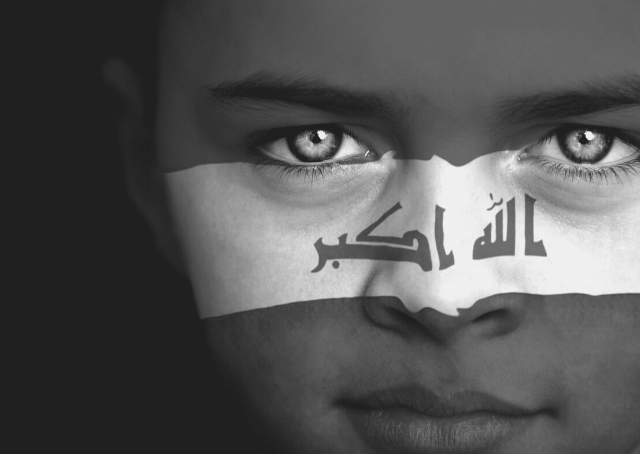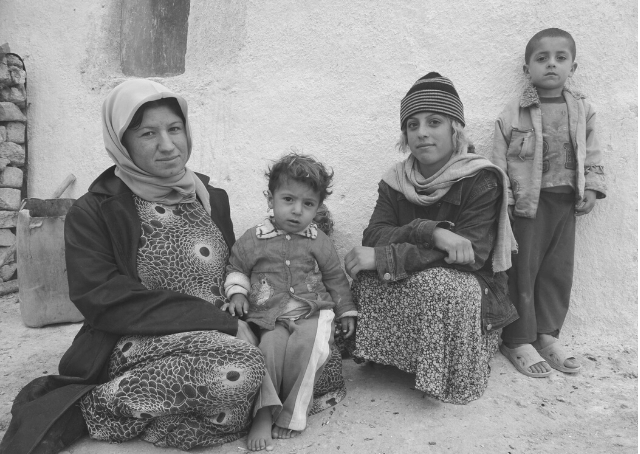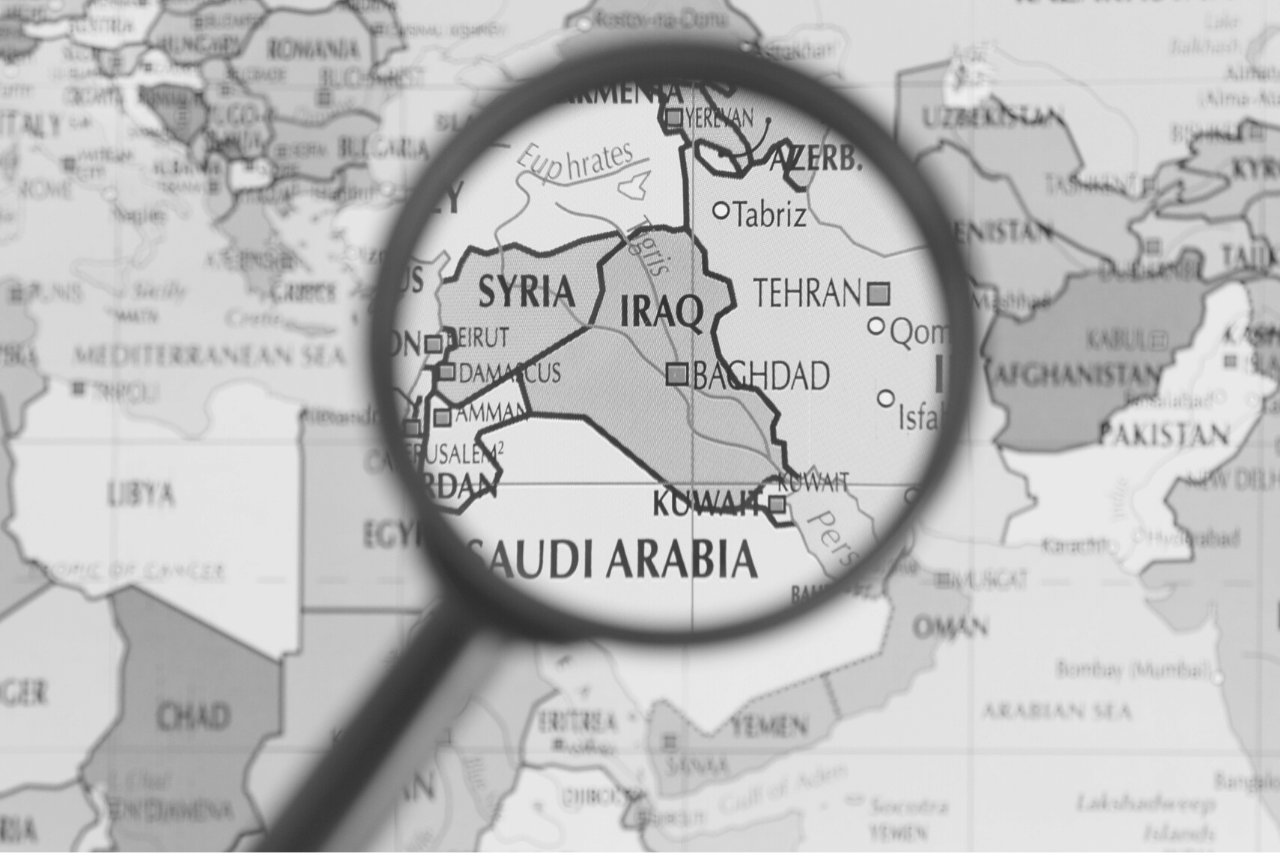Iraqi Culture: From People to Practices
Modern-day Iraqi culture reflects its Mesopotamian roots as the world’s oldest advanced civilization. The population of Iraq practices a wide array of traditions and customs that simultaneously reveal its Muslim roots, its Western influences, and its uniquely lively Iraqi culture.
In this article, we will explore the culture of the country, and the role it plays in everyday Iraqi life.
Iraqi Culture in Daily Life
Iraqi men greet each other with a handshake and alternating kisses on each cheek. Women also greet each other with kisses on the cheeks, but usually without a handshake. Some Iraqi men and women also greet each other in this manner, but it is less common, especially in public.
More conservative Muslims will simply nod instead of a handshake and kisses. Because Iraq is a predominantly Muslim country, touching between two people of the opposite sex is uncommon or used sparsely during greetings or conversation.
The Iraqi greeting is “asalaamu alaikum” which means “peace be with you.” The response to this greeting is “wa alaikum salaam,” which means “and peace be on to you.”
Iraqis are generally very welcoming people and offering their home as a place to stay to visitors is very common. Guests are usually treated hospitably, and declining this invitation is seen as rude in Iraqi society. When visiting houses, it is custom for Iraqis to bring small snacks like pastries or cookies.
Extended families in Iraq are much more tight-knit than other Western societies. Large extended families often live in the same neighborhood or even in the same house.
Women are relatively restricted in Iraqi society, though this depends on the region. Urban centers tend to be more relaxed with religious laws regarding women than rural villages.
Generally, it is frowned upon for women to smoke tobacco or drink water in public. Women are forbidden from driving public transit, such as busses or taxis, in most of Iraq. In most cities, women can be in nearly any occupation as long as they are qualified for it.
Alcohol is sold discreetly in Iraq, as vendors must be a certain distance from schools and mosques. Illegal substances are strictly forbidden in Iraq, and a user can serve prison time if caught by authorities. Unlike the Western weekend of Saturday and Sunday, the Iraqi weekend is Friday and Saturday.
Iraqi Religion
Islam is the official language of Iraq, with a 97 percent Muslim population. There are also some smaller Christian communities in Iraq’s urban centers, though many have increasingly fled the country due to the widespread violence since 2003.
Before Saddam Hussein rose to power the country was relatively secular. However, during the later years of his regime, Saddam increasingly used his power to unite Sunni Muslims under his rule and put “God is Great” in Arabic on the Iraqi flag.
It is estimated that around 60 percent of the country’s population are Shia Muslim, while 40 percent are Sunni. Sunni Muslims predominately made the ruling class of Iraq up until 2003. After the fall of Saddam Hussein’s regime, Shia Muslims were put in power and have dominated the Iraqi government since. Widespread violence between the two sects has enveloped the country throughout the 21st century.
Iraqi Language
Mesopotamian Arabic is the official language of the country, and Kurdish is the most prominent minority language. The Iraqi Mesopotamian dialect of Arabic is also spoken in some communities in Iran and eastern Syria. The dialect is influenced by the Greek, Persian, Kurdish, and Turkish languages.
Kurdish is largely spoken in the autonomous Northern Iraq region of Kurdistan, where most of the country’s Kurdish population lives.
Iraqi Clothing
During the first years of Iraq’s independence, much of the Iraqi population dressed in westernized clothing. However, under the reign of Saddam Hussein Iraqis were forced to dress much more modestly.
Iraqi women are expected to dress modestly and cannot wear see-through clothing. While in most cities women do not have to wear a hijab in public, the wearing of the hijab is more common in religiously conservative regions. During religious holidays, such as Ramadan, both men and women are expected to dress more conservatively.
Throughout the regions of Iraq that have been occupied by insurgents throughout the 21st century, especially in cities like Mosul in Northern Iraq, the hijab was required for women in the region. This could often be punishable by death.
Iraqi men are generally forbidden from wearing shorts in public, but otherwise have complete freedom in their attire.
Iraqi Art
The city of Baghdad has been a prominent center for Middle Eastern art for centuries, and the government conducted many projects throughout the 1970s to restore some of the country’s historical buildings. Throughout the 1950s and ’60s, there was an explosion of art in the city and throughout the rest of the country.
When the Ba’ath party took control of the country this artistic explosion was further heightened, as it actively encouraged poets, sculptors, playwrights, and painters to produce works that reflected the country’s ancient Mesopotamian roots. The government not only directly funded many individual art projects but also created a multitude of cultural art festivals throughout the country.
The influences of Saddam Hussein’s regime could be found in every festival and art show through his regime, as his face was shown in paintings and propaganda posters throughout Iraq. Hussein not only used art to transform an increasingly westernized Iraq back to a strong Arab country that rallied behind its ancient roots but also used Iraqi art to consolidate his power in the Iraqi government.
The 20th century marked a distinct transformation of Iraqi architecture, as many architects traveled to Europe to study. They returned to the country with many Western influences that shaped modern Iraqi architectural styles. Despite this Western influence, the 20th-century architects hoped to create a style that was distinctive to Iraq.
During the mid-20th century when the country began to modernize due to its new oil revenues, many architects saw a threat to traditional Iraqi buildings as cities increasingly expanded. Many architects, artists, and photographers made a concerted effort to document historical monuments and traditional architecture throughout the country to ensure traditional Iraqi structures would not be lost to history forever.
Iraqi Museum and Library
The Iraq Museum was created in 1923 and boasts some of the world’s artifacts. The collection includes artifacts from the Sumerian, Babylonian, Akkadian, Assyrian, and Chaldean civilizations. It includes the Nimrud gold collection, which dates back to the 9th century BC, and stone carvings from Uruk that date back to the 4th century BC.
The museum was looted during the 2003 U.S. invasion of Iraq, and thousands of artifacts and art pieces were stolen by looters. A massive international effort led by law enforcement officials and archaeologists led a search for these missing artifacts. When the Museum opened in 2009 it only possessed one-quarter of its pre-2003 collection.
During the British mandate period after World War I, European and American archaeologists began excavating Iraq. British intelligence agent Gertrude Bell ensured that artifacts found on Iraqi soil would not leave the country by storing them in one of the country’s government buildings in the capital city of Baghdad.
In 1926 these artifacts were moved to a new building, which became the Baghdad Antiquities Museum, where Bell was put in charge of the collection as director. The collection was moved in 1966 to the east of the Tigris River in the Al-Karkh district of Baghdad, where the museum was renamed the National Museum of Iraq.
Gertrude Bell also played an important role in establishing the National Library in Baghdad. The library was created in 1920 as the Baghdad Peace Library and was largely funded and stocked by donations. Anastas Al-Karmali, a Catholic priest, became the first librarian of the Peace Library.
Due to financial troubles, Iraq’s Ministry of Education took over the administration of the library. In 1929 it was renamed the Public Library and moved to the nearby al-Mamooria school. In 1961 the Public Library was renamed the National Library by the Iraqi government.
Iraqi Literature
The Hussein regime forced many Iraqi writers to begin creating propaganda for his government. Throughout the 1970s, Hussein frequently bought writers’ houses, cars, and other items in exchange for writings that praised his regime. Throughout the 1980s during the Iran-Iraq War Iraqi writers were expected to become increasingly patriotic with their writings, and many writers were forced into exile.
Unfortunately, the widespread poverty and violence that enveloped the country since the 1990s have led to lower literacy rates in the population, which has curtailed the blossoming of Iraqi literature. However, throughout the 2010’s Iraqi literature once again began to flourish due to the ascension of more relaxed governments in Baghdad.
Iraqi Music
Historically, the musicians of Baghdad have been world-renowned for both their musical compositions and their poetry. The traditional Iraqi instrument is the oud, which is the primary instrument in the Middle East that heavily influenced the creation of the guitar. The oldest reference to the instrument is a 5,000-year-old stone carving in Southern Mesopotamia that depicts a woman strumming an oud.
Iraqi music heavily relies on a combination of improvisation and poetry recitation. Much of this poetry is derived from the works of classical Arab poets. Iraqi villages often have community choirs that sing together on a daily basis. Throughout the 2010s, the playing of live music has grown greatly throughout Iraqi cities.
Live Iraqi music declined during the violence of the 1990s and 2000s, but it has made a resurgence since the toppling of the Islamic State in 2017. The Islamic State expressly condemned the playing or listening of music in its occupied territories in northern and western Iraq.
Iraqi Sports
Soccer is by far the most popular sport in Iraq and came to prominence in the 1970s during the Iraqi oil boom. The Al-Sha’b Stadium in Baghdad is one of the most popular sports venues in the Arab world. The Iraqi soccer team won fourth place in the 2004 Olympic Games and won first place at the Asian Cup in 2007.
Basketball, kickboxing, and wrestling are also common recreational sports throughout the country’s population.
Iraqi Food
The Iraqi cuisine is heavily influenced by Syrian, Lebanese, Turkish, and Iran foods. The most popular foods in Iraq include kebabs, falafel, kofta, and masgouf. The Iraqi meal usually begins with a small appetizer salad and long-grain rice is served with most dishes.
While much of the Iraqi population regularly drink coffee, the primary beverage for Iraq’s population is tea. Tea is often drunk multiple times a day in many Iraqi households.
While the consumption of alcohol is technically forbidden by Islam, in recent years discrete alcohol drinking has become more common, especially among young Iraqis. Western beverages have also become increasingly common in Iraqi markets throughout the 2010s.
Conclusion
We have covered many components of the culture and customs of the Iraqi people.
Let’s review the main ideas:
The Iraqi people are largely a very welcoming population to outsiders and have accepted many Western influences throughout the 21st century.
While the urban centers of Iraq tend to have very similar cultural practices and customs to Western cities, rural areas tend to be more religiously conservative.
Baghdad has been a prominent center for Middle Eastern culture for centuries, including world-renowned art, music, literature, and collections.
Soccer is the most popular sport in Iraq and is frequently played recreationally throughout the country’s population.
Iraqi music is a staple of both Iraq’s urban centers and rural villages. Traditional Iraqi music heavily revolves around improvisation and the recitation of poetry.
Iraqi music, art, and literature were heavily used by Saddam Hussein’s regime as propaganda used to consolidate his power of the country.
Throughout the 2010s Iraqi culture has begun to rejuvenate due to a decline in widespread violence and more relaxed governments.
Though modern-day Iraq is still rebuilding from years of warfare and destruction, it is a welcoming destination for thousands of visitors every year. While Iraq is a conservative Muslim country, its cities and urban centers have many secular Iraqi traditions and customs that reflect its vibrant, welcoming population.













